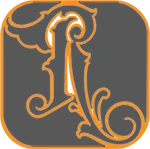
How to Design a Tattoo that Flows with the Body: Guy Aitchison's Tattoo Tips
Meta Description
Learn how to design tattoos that complement body structures with insights from Guy Aitchison. Match designs to clients' unique physiques.
Introduction
“In tattooing, the canvas isn't flat. It's alive, three-dimensional, and unique to every client.” This quote from Guy Aitchison encapsulates the essence of creating tattoos that naturally flow with the body. In today's post, we'll delve into techniques for designing tattoos that harmoniously integrate with the body's contours, enhancing both the art and the artist's craft.
Importance of Natural Tattoo Flow
Tattooing is more than placing ink on skin—it's crafting art that melds with the body's innate form. A tattoo's natural flow can elevate it from mere decoration to an integral part of the individual's physical expression. Guy emphasizes using photographs to tailor designs that respect and enhance the client's body structure.
Using Photographs in the Design Process
Photographs are a critical tool for ensuring a tattoo design follows the unique shape of the client’s body. "Photographs allow us to consider angles, muscles, and bones," Guy states. For out-of-town clients, obtaining photos they send is essential. In the studio, conducting photography sessions can provide the needed detail. These images become the foundation upon which potential designs are drawn.
Integrating Technology
Tools like Procreate can be transformative, allowing artists to sketch directly onto digital photos. Guy highlights, "With Procreate, you’re sketching on the body itself, making adjustments as needed." Traditional methods, such as printing photos and drawing directly, still hold value for those who prefer tactile interaction with their art process.
The Initial Sketching Process
Thumbnail sketches form a pivotal step in aligning designs with body flow. “Thumbnail sketches help us visualize the design's movement,” Guy suggests. Assessing angles from various photos ensures the design remains true to the client's physique. By focusing on natural structures like muscles and bones, the sketches evolve into designs that contour elegantly along the skin.
Achieving the Perfect Fit
Ultimately, these practices ensure the tattoo is not just a surface adornment but a seamless extension of the client's body. Guy notes the outcome, “A tattoo that fits perfectly doesn’t just look good—it feels right.” This holistic approach underscores the importance of viewing tattoo design as a collaborative journey between artist and client.
Conclusion & CTA
Incorporating the client's unique body into each design amplifies both the art and the artist's skill. As you refine your techniques, consider how each project can push your understanding of the body and its possibilities. Watch the next video in our series or revisit previous ones to further enrich your practice.
Call-to-Action
Explore advanced tattoo technique modules now—elevate your linework, shading, and consistency with master-level education that fits your schedule.

